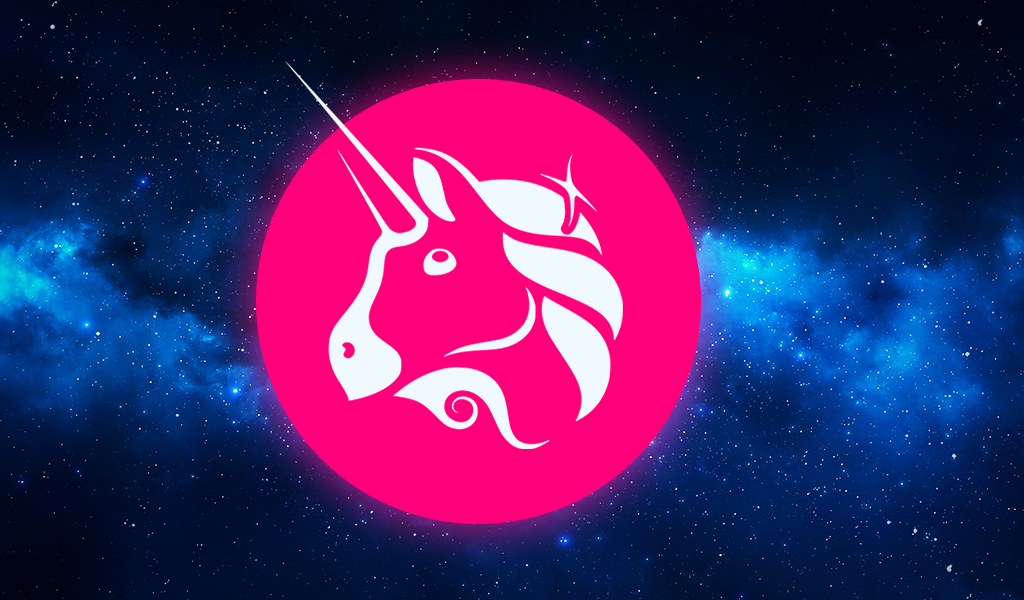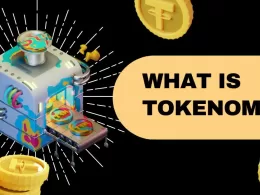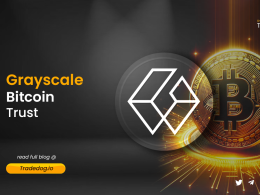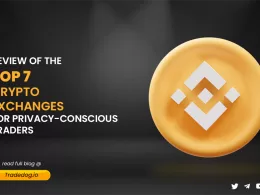Quick Links
Uniswap is currently the most popular decentralized exchange. It was launched on 2nd November 2018 by Hayden Adams. In less than 4 years, it became the largest and most used DEX with 38000 daily active users. Its total value locked (TVL) is $3.91 billion, with the highest allocation on Ethereum at $3.64 billion. It has onboarded over 3 million crypto traders with a current market capitalization of $4.9 billion and integrated into 300+ DeFi apps and programs.
Other DEXs, before Uniswap, used an order book model, which was conventional, matching the buyer-seller demand on both ends for a trade to be completed. Uniswap introduced the AMM liquidity model, which was first explained by Vitalik Buterin, co-founder of Ethereum. It is built on open-source technology, which allows anyone to contribute liquidity and share the earnings made by the liquidity pool.
Three different versions were released by Uniswap, each of which included an improved model and increased usability. AMM was first introduced in V1 as a proof-of-concept, and then it was updated in V2 with new features and greater optimization. Similarly to that, the current release of V3 introduced the idea of concentrated liquidity, allowing traders to increase their profits. Thus, Uniswap made an effort to improve as the best DeFi platform over time by adding greater functionality, introducing fresh ideas, and improving its usability. Let’s understand each version and see what additions it offered.
Uniswap V1 Protocol
Uniswap V1 was the original version of the protocol, which was introduced in November 2018. It brought in the introduction of the Automated Market Maker Liquidity Model. To know details of the AMM Model and its working refers to this blog. The only problem with Uniswap V1 was that it supported only one liquidity pool, i.e., the swapping of ETH and ERC20 tokens. Let’s say you want to swap DAI tokens with USDT. For this, first, you have to put in DAI tokens in the DAI/ETH liquidity pool and convert it to ETH, then convert ETH to USDT by putting in ETH/USDT liquidity pool. Now, this brought great inefficiency to the Liquidity Providers as well as the traders. Below are the problems that are being faced by LPs and traders.
- The liquidity providers have to have exposure to ETH. The price fluctuation in ETH will result in impermanent loss. The greater the fluctuation greater will be the impermanent loss.
- For traders, it led to an increase in cost, as they had to pay the gas fees twice. First at the time of converting assets to ETH and second at the time of converting ETH to ERC20 tokens. Due to double transactions, they also had to suffer slippage twice.
Any crypto transaction trader has to pay the transaction fee of 0.3% on Uniswap V1 liquidity pools, which is then shared with the liquidity provider in proportion to their contribution to the pool.
Uniswap V2 Protocol
In May 2020, Uniswap V2 was launched to fulfill the shortcomings of V1. Uniswap V2 protocol was more user-friendly and also solved the Ethereum bridging challenge faced by V1 users, who wanted to trade non-ETH or ERC20 tokens on the platform.
It introduced more liquidity pools, like a pair of ERC20/ER20 token pools, which allowed the direct swapping of ERC20 tokens with ERC20 tokens without the need of converting them to ETH.
Also, the concept of wrapped crypto was introduced like, wrapped ETH or wrapped BTC for non-native ERC20 tokens. Wrapped ETH (WETH) is a combination of Ethereum and ERC20 tokens, for users. Users can trade and use this WETH token as an ERC20 token without actually having to convert them into ERC20 tokens. This makes the process smoother, as they don’t have to go through the tedious process of converting ETH into different assets, each time they want to trade. This helped to reduce trading costs on a decentralized exchange.
Uniswap V2 also introduced:
- Time Weighted Average Price Oracle (TWAP) – This is a new functionality that measures the average price of the asset over a period of time. This enables a highly decentralized and manipulation-resistant on-chain feed.
- Flash swaps order types, which allowed users to withdraw as many tokens as they want to without paying any upfront transaction fees, provided that at the end of the transaction execution, the user can either pay for the token withdrawn, or pay for the portion and return the rest of the withdrawn token, or return all ERC20 token.
For example, let’s say you can buy 1 ETH in exchange for 200 DAI on Uniswap, and then sell that 1ETH on Oasis in exchange for 220 DAI. But, you don’t have any DAI in your wallet. With Uniswap V2 you can withdraw 1ETH, without making any payment and sell it on Oasis in exchange for 220 DAI, and pay back the 200 DAI for the 1ETH you purchased on Uniswap.
Uniswap V2 also had a transaction fee of 0.3% but, in this version, they also included a protocol fee of 0.05%. This will be deducted from the total fee earned from the liquidity pool and set aside for future developments in the Uniswap Dex platform. Thus, only 0.25% of the fees will be available for distribution to liquidity providers.
Uniswap V3 Protocol
In May 2021, Uniswap V3 was introduced with another upgrade to the AMM – based DEX. This version is more advanced and user-friendly and injected more flexibility and features into its DEX. A new concept of concentrated liquidity was added to the platform. This allowed liquidity providers to concentrate their liquidity to a custom price range.
In version 2 of Uniswap, liquidity was evenly distributed along the price curve between 0 – infinity and trading were allowed across the entire price interval, without any loss of liquidity. This resulted in the majority of unused liquidity in many pools.
For example, let’s look at a stablecoin pair, where both assets’ relative prices are quite constant. There is a specific price range in which liquidity is high. This range mostly revolves around the current price, outside this range liquidity remains unused. Take the DAI/USDC pair in version 2, for instance. Between $0.99 and $1.01, the price range in which LPs would anticipate seeing the highest activity and hence earning the most fees, this pair only uses 0.5% of the total capital available.
Version 3 of Uniswap allows liquidity providers to concentrate their capital in a smaller price range. Using the aforementioned illustration, a liquidity provider may decide to allocate all of its capital to the 0.99 to 1.01 range. This helps in providing more liquidity to traders around the current price range and liquidity providers can earn more liquidity with their capital. Each liquidity provider has the opportunity to choose a different price interval in a distinct pool, creating an individualized price curve reflecting the preference of each LP.
Active Liquidity
When the price of the token exits the price bound created by the LPs then, liquidity providers no longer remain active and they no longer earn fees. The liquidity will be converted entirely into an asset with less value as the swapper demands the other. This will continue as long as the price remains outside the range until you decide to update the range according to the price change.
Thus, you have only 3 options. Either choose multiple price ranges or a wider price range with low capital efficiency and less exposure to the risk of price fluctuation or you can choose a narrow price range and earn high capital efficiency with the risk of exposing yourself to price fluctuation.
Non-Fungible Liquidity
Since LPs can provide liquidity in specific price ranges, their liquidity positions aren’t fungible anymore. As ETH/DAI positions at two different price ranges aren’t the same. A narrow price range has higher capital efficiency than a broader price range, but with high risk and the possibility of inactive liquidity. Thus, the LP position in Uniswap V3 can’t be represented as ERC20 tokens but as nonfungible ERC721 tokens(NFTs).
Flexible Fees
Uniswap V3 brought community-governed flexibility through multiple fee tiers:
- 0.05% – expected for stablecoin pools like DAI/USDC
- 0.3% – for standard non – correlated pools like ETH/DAI
- 1% – for exotic non – correlated pairs like ACH/ETH
Each pool’s charge is set by its liquidity providers when it is created, and the UNI community can vote on suggestions to add further fee levels.
Uniswap Recent Updates
Recently, Uniswap DAO passed a proposal to deploy Uniswap V3 on the Binance Smart Chain (BSC). The reason behind Uniswap thinking of implementing V3 on BSC is because they are the 3rd largest chain with a TVL of $5 billion. According to our calculation, Uniswap has acquired an average of 8.87% of the total TVL on other chains. Thus, after this implementation, they will generate $443.5 million in TVL, a significant amount of trading activity, and access to 1 to 2 million retail users.
This proposal received 50 million votes in favor and 1 vote in opposition from a16z which is an investment company. As the risk of centralization is involved here, and V3 is too difficult for retail-driven BSC consumers when dealing with volatile assets. Farming is still a very common use case for BSC protocol, however, integrating the V3 NFT-type liquidity pool tokens will be difficult.
Conclusion
From the time Uniswap has been introduced, it is a leading decentralized exchange (DEX) and the most popular DeFi platform around the globe. They are very innovative with every version they are launching introducing new features into their platform and making their interface more user-friendly. Uniswap V3 not only enabled users to earn a higher return on their capital but also brought new possibilities to the developer community to build an ecosystem around it.
The platform of Uniswap V3 now incorporates more complicated concepts that the user will find challenging to comprehend. Thus, it can stop the user base from expanding. This offers developers the chance to work on the problem’s solution, make Uniswap V3 more user-friendly, and create products that will assist experienced users in developing advanced trading and investment strategies.









